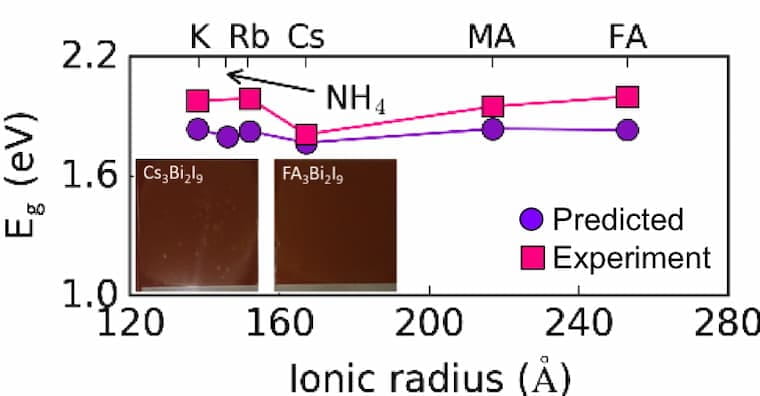22. Insensitivity to large chemical pressures in bismuth iodides
X. Huang, S. Huang, P. Biswas, R. Mishra, Journal of Physical Chemistry C 120, 28924 (2016).

Band gap insensitivity to large chemical pressures in ternary bismuth iodides for photovoltaic applications.
X. Huang, S. Huang, P. Biswas, R. Mishra, Journal of Physical Chemistry C 120, 28924 (2016).
Ternary bismuth iodides (A3Bi2I9, where A is a monovalent cation) have been recently suggested as less toxic alternatives to lead halide perovskites for photovoltaic applications. Using density functional theory based calculations, we predict that the band gap in these compounds is insensitive to chemical pressure applied by changing the size of A-site cations, which is confirmed experimentally. We further show that the band gap in A3Bi2I9 compounds increases (or decreases) by stretching (or compressing) Bi2I9 bioctahedra, and the observed band gap insensitivity is a direct result of the counteractive interplay of three factors: the size of the A-site cations, the presence of H-bonds with organic A-site cations, and spin–orbit coupling (SOC) effects. Our study demonstrates that the layered structure of A3Bi2I9 compounds intrinsically limits any significant modification of their band gap and highlights the need for three-dimensional connectivity of BiI6octahedra in order to achieve high efficiency Bi-based photovoltaics.